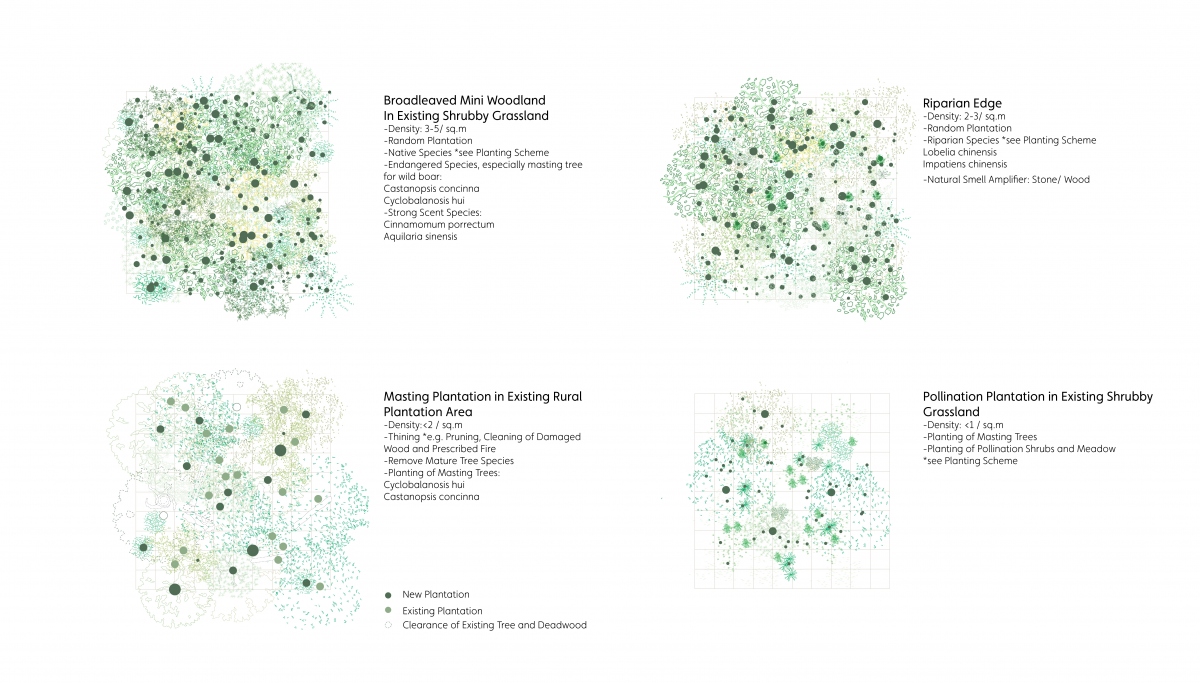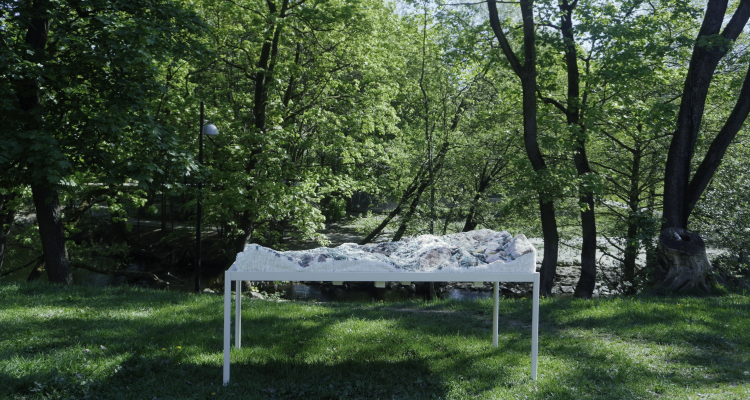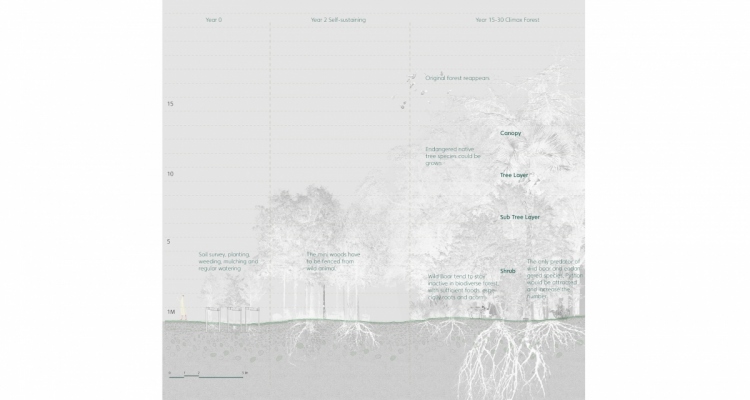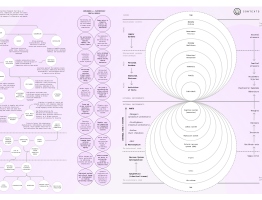Diplomprosjekt
Vår 2024
Institutt for urbanisme og landskap
Wild boar, Sus scrofa, is a native species in Hong Kong and provokes debates of wild life management among the government and the animal welfare groups due to increasing coexistence between wild boar and human. The design project investigates the olfactory perception through the lens of wild boar. Smellscape is crucial for wild boar management and an innovative smell spatial toolbox is developed for reforestation in country park planning. It aims at creating sensory corridor by setting up guidance of self-sustaining reforestation to rewild the original broadleaved and riverbank woodlands in Hong Kong. Through 30-year reforestation planning, it is a co-creation with native woodland and climate adaptation strategy to be resilient to the endless threat of wildfire and typhoon, with drier and more windy weather under climate change in subtropical context.

Design Principle: Smell Nodes, Smell Breaks, Visual Node and Fire Breaks
There are four main spatial rules: Smell nodes are key natural perfumes, include replacement of existing grassland by new mini native feng shui woodland with Miyawaki reforestation method, mini riparian edges with beaver dam technique, masting plantation in existing rural plantation area and pollination plantation in existing shrubby grassland, mainly prioritize the water source and topography facing the dominant winds in spring and autumn, as to maximize the pollination and masting effect, providing more foods, as well as a typhoon shelter and to slow down the wild fire.
Reforestation and Wild Fire Resilience Models: Miyawaki Woodland
Miyawaki woodland is introduced as a mini reforestation model to regrow the native woodland, even sites with poor soil conditions. It boosts the succession, shorten from hundreds years of growth to minimum of 15 years. The endangered native broadleaved woodland in Hong Kong is possible to be regrown, and thus the habitat of native species, not just wild boar, would find their natural home. By planting seedlings randomly and densely with stakes supports, weeding and regular irrigation for the first 2 years, the mini woodland will be self-sustained. It is a huge smell diffuser, food source and breeding sites to attract wild boar. It is also used for slope protection, erosion control, shelter from typhoon and slow down the wild fire.
New coexistence woodland pattern through smellscape will be a pilot project in Hong Kong, not just for wild boar, but also endangered species, like predator, python, to achieve balance of ecosystem under urbanization in Hong Kong. The resilience model is also a base for co-creation with nature. Wild boar management is a global concerns, hopefully, the spatial rules could be applied to other countries.


Lai Ching Ng / Lai.Ching.Ng.Works@gmail.com

Design Principle: Smell Nodes, Smell Breaks, Visual Node and Fire Breaks
There are four main spatial rules: Smell nodes are key natural perfumes, include replacement of existing grassland by new mini native feng shui woodland with Miyawaki reforestation method, mini riparian edges with beaver dam technique, masting plantation in existing rural plantation area and pollination plantation in existing shrubby grassland, mainly prioritize the water source and topography facing the dominant winds in spring and autumn, as to maximize the pollination and masting effect, providing more foods, as well as a typhoon shelter and to slow down the wild fire.
Reforestation and Wild Fire Resilience Models: Miyawaki Woodland
Miyawaki woodland is introduced as a mini reforestation model to regrow the native woodland, even sites with poor soil conditions. It boosts the succession, shorten from hundreds years of growth to minimum of 15 years. The endangered native broadleaved woodland in Hong Kong is possible to be regrown, and thus the habitat of native species, not just wild boar, would find their natural home. By planting seedlings randomly and densely with stakes supports, weeding and regular irrigation for the first 2 years, the mini woodland will be self-sustained. It is a huge smell diffuser, food source and breeding sites to attract wild boar. It is also used for slope protection, erosion control, shelter from typhoon and slow down the wild fire.
New coexistence woodland pattern through smellscape will be a pilot project in Hong Kong, not just for wild boar, but also endangered species, like predator, python, to achieve balance of ecosystem under urbanization in Hong Kong. The resilience model is also a base for co-creation with nature. Wild boar management is a global concerns, hopefully, the spatial rules could be applied to other countries.


Lai Ching Ng / Lai.Ching.Ng.Works@gmail.com







